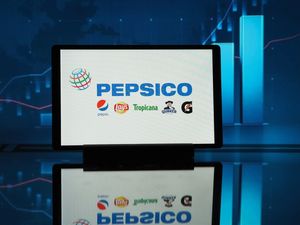
Metzingen, Germany – October 10, 2025 – In a landmark strategic partnership announced today, Sona BLW Precision Forgings Ltd (NSE: SONACOMS), a prominent Indian automotive components manufacturer, has joined forces with Germany-based NEURA Robotics GmbH. This collaboration is set to accelerate the development and industrialization of advanced robotics and humanoid technologies, specifically targeting complex, repetitive assembly-line tasks across global industries. The alliance signifies a pivotal moment for both companies, propelling Sona Comstar into the burgeoning intelligent automation sector and providing NEURA Robotics with a crucial pathway for large-scale industrialization of its pioneering cognitive robotics.
The immediate implications of this partnership are profound. For Sona Comstar, it represents a strategic diversification beyond its traditional automotive domain into the broader mobility and intelligent manufacturing and service industries, positioning the company at the forefront of the rapidly expanding humanoid robotics sector. NEURA Robotics gains a powerful manufacturing and engineering partner to scale its innovative cognitive robotics, particularly in dynamic markets like India. The broader robotics industry anticipates an acceleration in intelligent automation, a transformation in manufacturing and logistics, and a significant boost to the rise of humanoid robotics, underscoring the increasing globalization of innovation in this field.
A New Era of Automation: Details of the Sona Comstar-NEURA Robotics Alliance
The partnership, formalized through a Memorandum of Understanding (MoU) signed today in Metzingen, Germany, aims to merge Sona Comstar's extensive engineering and manufacturing expertise with NEURA Robotics' cutting-edge cognitive robotics technologies. The core objective is the joint development of advanced robotic technologies, components, and sub-assemblies for both humanoid and industrial robots.
Sona Comstar (NSE: SONACOMS) will specifically focus on developing high-tech components for humanoid robots designed to execute intricate, repetitive assembly-line tasks with unparalleled precision and consistency. These robots are envisioned to operate continuously, enhance productivity, and enable flexible manufacturing processes by adapting to changes in production. The collaboration also extends to the industrialization of these robots and humanoids in India and other mutually agreed-upon global markets, with a strong emphasis on creating "Made in India" robotics systems.
NEURA Robotics (Metzingen, Germany), founded in 2019, contributes its pioneering "cognitive robotics" approach. This integrates perception, decision-making, and motion control into a single system, allowing robots to see, hear, sense touch, and act autonomously, learning from experience to overcome the limitations of conventional industrial robots. Its humanoid robot, 4NE1, built with human-like fluidity and powered by proprietary AI AURA, aims to bring humanoid intelligence from research to reality. The signing ceremony was notably attended by Sanjay Jaju, Secretary, Ministry of Information & Broadcasting, highlighting the strategic national importance of such collaborations.
Initial market reactions have been largely positive. Shares of Sona Comstar (NSE: SONACOMS) experienced a significant surge following the announcement, rising as much as 4.2% intraday and closing 0.7% higher on the BSE. This upward movement reflects investor optimism regarding Sona Comstar's strategic diversification and its alignment with the transformative era of intelligent automation, fueled by rapid advancements in artificial intelligence and declining computing costs.
Winners and Losers: The Market Impact of a Robotics Powerhouse
This strategic alliance is poised to reshuffle the competitive landscape, creating clear winners and presenting new challenges for others across various industry segments.
Sona Comstar (NSE: SONACOMS) stands as a significant winner. By venturing beyond its traditional automotive components business, the company diversifies into the high-growth intelligent automation market. Its existing precision engineering, manufacturing capabilities, and expertise in electric powertrains (motors, inverters, gearboxes) are directly transferable to robotics, providing a robust foundation. This move strategically positions Sona Comstar at the intersection of mobility and intelligent automation, allowing it to tap into future manufacturing and service industries. The "Made in India" focus further bolsters its competitive edge in the rapidly expanding Asian industrial robotics market.
NEURA Robotics also emerges as a major beneficiary. As a relatively young company, this partnership provides crucial access to Sona Comstar's established global manufacturing infrastructure and engineering expertise. This will accelerate the industrialization and scalability of its advanced cognitive robots and humanoids, enabling faster market penetration, particularly in India and other key global markets. This alliance provides NEURA Robotics with the necessary scale to compete with more established robotics firms and bring its vision of adaptable, autonomous robots to a broader industrial audience.
Customers across industries, particularly in automotive manufacturing and logistics, are set to benefit from access to potentially more advanced, efficient, and cost-effective industrial and humanoid robots. These robots, designed for high-precision, repetitive tasks, promise enhanced productivity, safety, and operational flexibility. The "Made in India" emphasis could also make these solutions more accessible and affordable in the Asian market. The broader Indian robotics ecosystem will also gain, strengthening the nation's position in the global automation value chain.
Conversely, traditional industrial robot manufacturers such as FANUC (TYO: 6954), ABB (SWX: ABBN), KUKA (FRA: KU2), Yaskawa (TYO: 6506), and Universal Robots could face increased competition. While these giants hold significant market share, the Sona Comstar-NEURA Robotics alliance, with its focus on cognitive and humanoid robots for assembly lines, introduces a formidable new contender. If successful, this partnership could impact the market share and pricing power of existing players, especially in emerging markets and the burgeoning humanoid robotics segment. Similarly, emerging humanoid robot companies like Tesla (NASDAQ: TSLA) with Optimus, Figure AI, and Agility Robotics (Digit) that lack robust manufacturing and industrialization partners might find it challenging to scale production and compete on cost and availability. Sona Comstar's manufacturing prowess, combined with NEURA's AI, offers a significant advantage in moving from development to mass production for industrial applications.
The Wider Significance: A Catalyst for Intelligent Automation
This partnership is more than just a business deal; it's a significant indicator of broader industry trends and a potential catalyst for the next wave of intelligent automation.
The collaboration aligns perfectly with the overarching trend of the rise of intelligent automation, driven by rapid advancements in AI, perception, and control technologies, coupled with decreasing computing costs. NEURA Robotics' focus on "cognitive robotics"—integrating perception, cognition, and actuation into a single platform—is a key aspect, moving beyond traditional pre-programmed robots towards machines that can understand, learn, and adapt to their environments. This enables greater versatility for complex tasks and fosters more seamless human-robot collaboration, addressing the growing need for flexibility and safety in various industries. Humanoid robots, in particular, are increasingly viewed as "platform technology" with broad applications across logistics, eldercare, hazardous industrial operations, and consumer interactions, suggesting a shift towards general-purpose robotic platforms. The "Made in India" focus also highlights a growing trend towards global expansion and localization of advanced robotic solutions.
The ripple effects are expected to be substantial. Competitors in both industrial automation and emerging humanoid robotics will likely face increased pressure to innovate and form similar strategic alliances to match the combined strengths of Sona Comstar's manufacturing capabilities and NEURA Robotics' AI prowess. This could spur a faster pace of innovation across the industry and drive demand for advanced components from specialized suppliers. New partnerships or acquisitions could also emerge as companies seek to gain an edge in cognitive robotics and humanoid development.
From a regulatory and policy standpoint, the rapid advancement in robotics and AI, exemplified by this partnership, necessitates cohesive frameworks. Many countries still lack comprehensive policies, leading to a reliance on private industry standards. The ethical implications of autonomous, cognitive robots regarding decision-making, accountability, and societal impact are paramount, with global initiatives like the EU's AI Act adopting a "risk-based" approach. Labor market impacts, data privacy, and cybersecurity are also critical areas that will require careful consideration and robust regulation to build public trust and ensure responsible development.
Historically, this partnership echoes earlier transformative collaborations in industrial automation. The alliance between George Devol and Joseph Engelberger, leading to Unimation and the first industrial robot at General Motors in the 1960s, marked the birth of modern industrial robotics. Similarly, licensing agreements like Kawasaki's with Unimation propelled Japan into manufacturing leadership. The Sona Comstar-NEURA Robotics partnership represents a contemporary parallel, where established manufacturing expertise converges with cutting-edge AI and robotics innovation to drive the next phase of intelligent automation, albeit with the added complexity and potential of cognitive AI and humanoid forms.
What Comes Next: Navigating the Future of Robotics
The path ahead for the Sona Comstar and NEURA Robotics partnership is filled with both immense potential and significant challenges, requiring agile strategic pivots and continuous adaptation.
In the short-term, the focus will likely be on intensive component and sub-assembly development, leveraging Sona Comstar's expertise in electric powertrains for high-tech components crucial for advanced robots and humanoids. Pilot projects and prototyping, potentially at Sona Comstar's R&D and Innovation Centre in Chennai, will be critical for assessing performance in realistic environments, collecting data on efficiency, error rates, and energy usage. The "Made in India" initiative will also be a key priority, aiming for localized manufacturing and customization for the Indian market, while refining NEURA Robotics' cognitive AI for specific industrial applications.
Long-term possibilities include Sona Comstar transitioning from a component supplier to a full system supplier, offering complete industrial and humanoid robot solutions, and expanding market penetration beyond India to other global markets. The vision involves robots becoming more intelligent and autonomous, capable of dynamic learning and enabling tasks like adaptive manufacturing and predictive maintenance. While assembly lines are the initial focus, the versatility of NEURA's humanoid technology, such as the 4NE1, could lead to expansion into logistics, eldercare, hazardous operations, and even consumer interactions.
However, the dynamic nature of the robotics market necessitates strategic pivots. Shifts in market demand, rapid technological advancements in AI and sensors, intense competition, and evolving regulatory landscapes will require continuous R&D investment and quick integration of new features. The partnership will need to differentiate its offerings through superior technology, cost-effectiveness, or specialized applications. Addressing the scarcity of trained labor in robotics programming and maintenance will also be crucial, requiring significant investment in skill development.
Market opportunities are vast, driven by the "new era of intelligent automation," global labor shortages, and the increasing demand for efficiency in manufacturing. The humanoid robotics market alone is projected to reach $66.0 billion by 2032, with millions of units in use by 2030, largely for manufacturing and warehousing. The India industrial robotics market for assembly lines is also expected to grow substantially. The push for Industry 4.0, smart factories, and improved worker safety further fuels this demand. However, significant challenges include integrating new robots with existing legacy systems, scaling humanoid robot manufacturing (which is comparable in complexity to EV production), overcoming hardware limitations like energy efficiency, ensuring seamless human-robot interaction, managing high upfront costs, and addressing workforce reskilling needs.
Potential scenarios range from an optimistic rapid and seamless integration, where the partnership quickly develops and deploys highly adaptable, safe, and cost-effective robots, leading to significant productivity gains and global leadership. A realistic scenario involves a gradual and phased rollout with iterative refinement, focusing on niche applications and progressive integration. A challenging scenario could see slow adoption due to technical glitches, manufacturing delays, high costs, or workforce resistance, potentially requiring the partnership to pivot its strategy towards component supply or different industries.
Wrap-Up: A Transformative Alliance for the Future of Work
The partnership between Sona Comstar (NSE: SONACOMS) and NEURA Robotics marks a transformative alliance, poised to redefine the landscape of industrial and humanoid automation. By bringing together Sona Comstar's manufacturing prowess and NEURA Robotics' pioneering cognitive AI, this collaboration is not just about building robots; it's about shaping the future of work and manufacturing.
Key takeaways underscore the strategic expansion for Sona Comstar beyond its traditional automotive domain, leveraging its expertise in electric powertrains to develop critical components for advanced robotics. NEURA Robotics gains a vital partner for industrialization and scalability, particularly with its "cognitive robotics" approach. The "Made in India" initiative is a powerful element, aiming to strengthen India's position in global automation and foster technological self-reliance. This partnership is a direct response to the global demand for intelligent automation, aiming to enhance productivity, enable flexible manufacturing, and improve worker safety through highly precise and consistent robotic operations.
The market moving forward for both humanoid and industrial robots in assembly lines is characterized by explosive growth. The humanoid robot market is projected for exponential expansion, driven by global labor shortages and advancements in AI, with millions of units expected in manufacturing and warehousing by 2030-2035. Similarly, the global assembly robot market is set for robust growth, fueled by the demand for automation to boost productivity, reduce labor costs, and meet Industry 4.0 requirements. AI-powered collaborative robots (cobots) are also gaining traction, offering flexibility and ease of programming.
The lasting impact of this collaboration extends beyond the immediate financial gains. It positions Sona Comstar at the forefront of an emerging sector, enhances India's robotics ecosystem, and promises to accelerate innovation in cognitive robotics. The partnership will likely set new standards for scalability and intelligence in automation, driving the broader adoption of both industrial and human-centric robots in manufacturing and logistics.
Investors should closely monitor several factors in the coming months. For the Sona Comstar-NEURA Robotics partnership, watch for concrete announcements regarding product development, pilot project deployments, and initial market penetration. Any early sales figures or large-scale project wins will be crucial indicators of momentum. Financial statements of Sona Comstar (NSE: SONACOMS) should be scrutinized for new revenue streams from robotics and the scale of investment in this venture. Leadership commentary from both companies will provide insights into progress and strategic direction. In the broader robotics sector, key areas to watch include continued advancements in AI and machine learning integration, trends in addressing global labor shortages, and the cost efficiency and ROI offered by new robotic solutions. While cautious, the long-term "humanoid EV moment"—a breakthrough leading to mass adoption—is a significant factor to track, alongside geographical trends, particularly in Asia-Pacific, and the evolving regulatory environment. This partnership offers exposure to the convergence of advanced manufacturing and AI-driven robotics, but diligent monitoring of execution and broader market dynamics will be essential for informed investment decisions.
This content is intended for informational purposes only and is not financial advice





